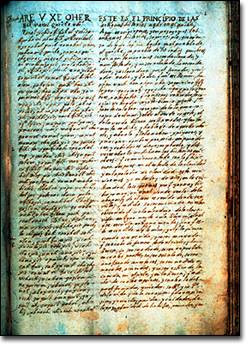It was Thursday. The autumn was as usual but in Wall Street, however, the density of the atmosphere could be cut with a razor.
During the past eight years, the so-called happy twenties, the growth in stock prices had attracted an irregular number of investors. Most had no idea how it works, the only thing they knew is they can buy a stock and after a while the price rose giving you immoral earnings. Like a Ponzi scheme. However, since a few months ago, the Dow Jones showed irregular movements.
The '20s had shown generally very good numbers for the economy. American industry took advantage of the destruction of the installed capacity of Europe after the First World War. Also agricultural production driven by rising global demand, but unlike the industry, prices of goods produced by the primary sector of the economy remained depressed. Keep in mind that U.S. territory was not theater of the conflagration in Europe while the trench warfare destroyed the industry and agricultural production. Recovery was not easy, especially for Germany, whose surrender of Versailles established the armistice that forced him to a level of compensation for the victors of the war that almost unfits to recover their production levels. Germany was obliged to pay annual compensation of 1,200 million gold francs. United States, Australia and Japan industry could leverage their production intact to hold the market Europeans could not recover after the war.
In America euphoria danced accompanied by new rhythms of Charleston, in dance halls and jazz in the basement of slums all of them fueled by illegal alcohol from Canada. Very few expected the economic disaster that hit like an asteroid in Wall Street.
The week before the fateful Thursday 23 October 1929, the stock exchange in New York suffered an unusual stock sale. This was the first tremor, a first bell that announced the tragedy. On Thursday, 24 October, known as the black Thursday, it went on sale 13 million shares below their value in the absence of an equal number of buyers. That day the police charged investors surrounding the building of the stock exchange in New York. It seemed that it has touched the bottom. By Friday it seemed that the worst was over. There was a stabilization result of the acquisition of a large number of shares above their price by an agent working for banks, by agreement of the Chase Manhattan Bank, JP Morgan Chase and National City Bank, which together put money to buy shares above its value, to try to reassure investors and avoid the anxiety that a stampede of sellers as the best style of the wild west.
On Monday 28 the Dow Jones average fell 13%. On Tuesday 29 were placed on sale 33 million shares. The panic was already uncontrollable. A human tide was trying to sell their shares at any price. Ruined investors fell down from skyscrapers; people took their savings from banks. When finally the smoke cleared no less than 32,000 businesses had disappeared, some 2,000 banks had closed, more than one million investors had lost all their savings, 25% of the economically active population was unemployed, industry contracted by 50%, world trade 66%. The Dow Jones fell by 89%. The stock prices fell to a level that regains its pre-depression value until 1954.
The stock market is not what caused the Great Depression. It is just a mirror of what happens in the economy. Several factors were the triggers that led to the crisis: the not well distribution of income, an increase in production that reached the level of not having a counterpart in demand, this led to an increase in inventories primarily by the inability of Europe to continue buying products caused by the increase in import fees in the United States that contracted export and therefore their purchasing power. The states were using an economic model based on the premise that increasing exports and reducing imports was best for strengthening the domestic economy. And it was for a time, until the reduction of imports weakens the countries to which exports are restricted, then the reduction of their purchasing bounds back as a ball.
The Great Depression was also held by the insistence on continuing with an exhausted model, the liberal model for whom the concept of "laissez faire" determined that the most appropriate to the crisis was simply doing nothing ... the invisible hand would provide that after the crisis came a turning point that changed the sign of the curve leading inexorably toward recovery and return to the boom.
But the invisible hand was never seen. First because it was invisible and secondly because investors finally, those who survived the Great Depression, would not risk falling into the list of suicides by investing in an economy in recession. Instead they preferred to wait crouched, dead quiet, the economy improved at the expense of other capitalists.
It was not the invisible hand, but John Maynard Keynes who finally managed to fix the global crisis. But that's another story.








































